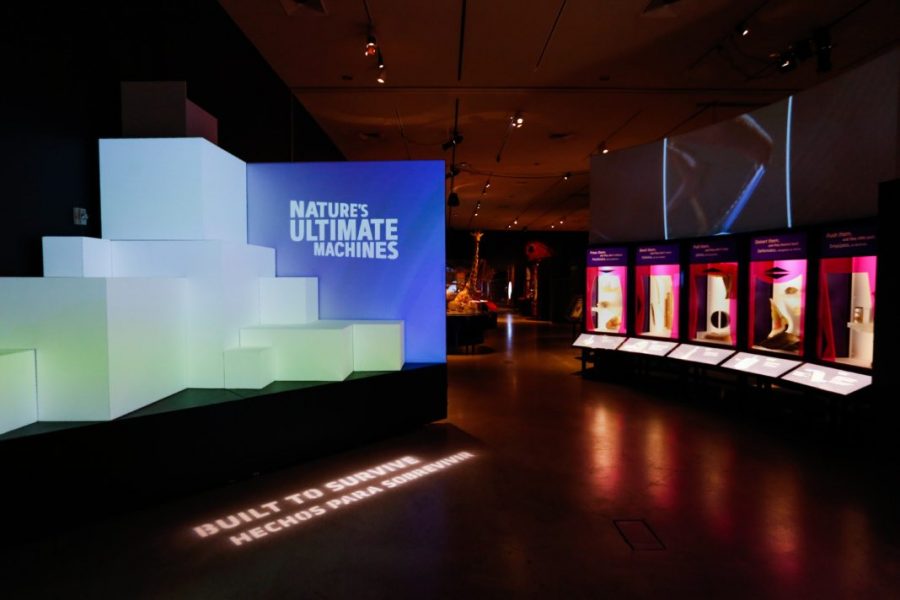Just as Schoolhouse Rock was the hub for the most underrated song lyrics of people’s childhoods, nature is the most underrated foundation of hundreds of inventions that make everyone’s lives easier. The Utah Natural History Museum is introducing a new exhibit that ties together the mother of all invention — necessity — and the amazing feats of nature that inspired some of today’s basic inventions. “Nature’s Ultimate Machines” opened Feb. 10 and will be available to guests until Sep. 3 to show just how often nature inspires modern mechanics.
Featuring over 130 specimens, videos, replicas and interactive displays, the exhibit answers questions about a variety of technological breakthroughs and the inspiration behind them. Explore everything from the creation of Velcro to how woodpeckers are able to avoid headaches, then discover how birds fly through the air and try it for yourself in a not-so-easy flight simulator. After your exploration — a quest that can be undertaken in both English and Spanish through the bilingual displays — discover how all of these things relate to the human condition.
Lindsey Reader, a graduate student at the University of Utah who is studying climbing behaviors in birds, recently visited the exhibit.
“I like the mix of the interactive stuff, the classic old-school use of specimens and then the current applied robotics stuff,” Reader said. “I think that’s a huge strength of biomechanics, is that … people ask ‘Why do you do such basic work?’ It’s so that we can forward-engineer things later and invent stuff. We’ve been taking inspiration from the biological world forever and hopefully putting it to good use.”
Alicia Boynton, also a graduate student at the U, is studying concussions and how to make better helmets for football players. What natural inspiration is she using? Woodpeckers. The length of their hyoid bone and tongue may hold the secret to improving football helmets and warning players of incoming impacts before they happen.
“Woodpeckers can experience over 1,000 g’s while they’re pecking at a tree and not have a concussion, not pass out, but humans can only withstand like 90 g’s (90 times the weight of gravity) before we pass out completely,” Boynton said.
Essentially, as Schoolhouse Rock explains it in “A Victim of Gravity”: “The bigger the object, the stronger the pull.” Humans aren’t made to withstand the large pull of gravity.
“We’re trying to look at woodpeckers and figure out how are they able to do it and how can we use that technology and those materials, [create] something similar in human helmets to protect our heads,” Boyton said.
That’s just one practical use of one aspect of nature that humans use to make life easier, but “Nature’s Ultimate Machines” is home to tons more. Learn about seeing with more than just your eyes and discover how the termite influenced architecture in this celebration of the amazing ways nature has encouraged technological advancement. The museum is free for U students, faculty and staff with a valid university ID.



